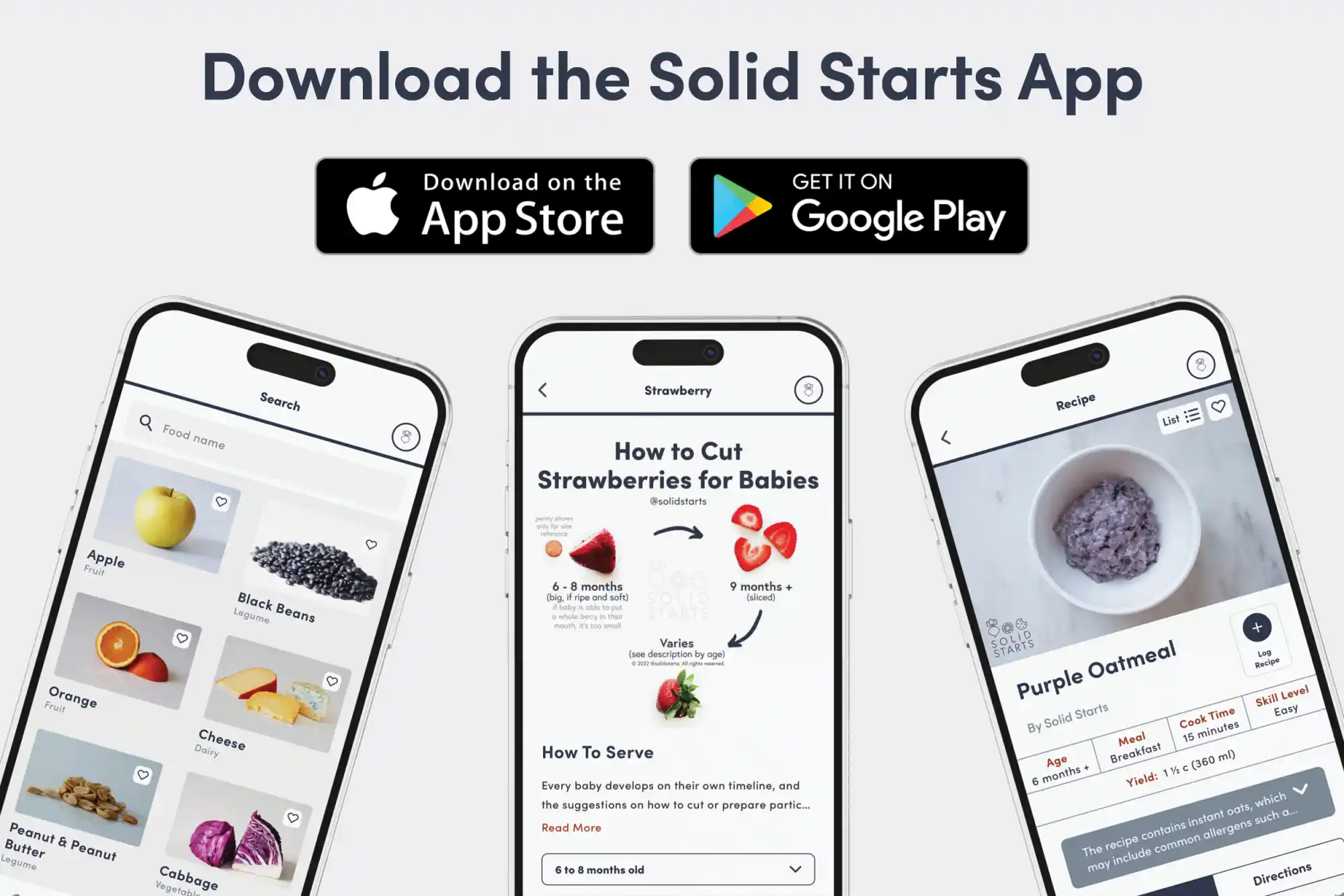Access our First Foods® Database in the Solid Starts App.
Learn morePawpaw
Fruit
Age Suggestion
6 months
Iron-Rich
No
Common Allergen
No

Warning
Do not offer pawpaw skin or seeds, which are toxic. Also, consuming cooked pawpaw fruit, unripe pawpaw fruit, or excessive amounts of ripe pawpaw fruit may lead to stomach upset. When sharing pawpaw, make sure it is ripe, with seeds and skin removed, and serve it in moderation.
When can babies eat pawpaw?
Ripe pawpaw (skin and seeds removed) may be introduced as soon as baby is ready to start solids, which is generally around 6 months of age. When introducing pawpaw, offer a small amount of fruit that is ripe and fresh (not cooked) at first. Some studies suggest pawpaw fruit may lead to stomach upset, particularly when it is cooked, dried, or consumed in large amounts.
Pawpaw grow on leafy trees that are native to North America, where Indigenous peoples and First Peoples of the Americas have been consuming the fruit for generations. Its tropical flavor is no coincidence: pawpaw is related to fruits known as cherimoya, custard apple, and sweetsop that grow across the tropics worldwide. Pawpaw likely made its way to North America tens of thousands of years ago as mammoths, mastodons, and other now-extinct megafauna gobbled up the fruit and spread the seeds to new regions.
How do you prepare pawpaw for babies with baby-led weaning?
Every baby develops on their own timeline, and the suggestions on how to cut or prepare particular foods are generalizations for a broad audience.
6 months old +:
Mash a small amount of fresh, ripe pawpaw (seeds and skin removed) and let baby scoop with a spoon or their hands. Just start slowly: consuming a lot of pawpaw fruit at once may lead to stomach upset.
9 months old +:
Mash a small amount of fresh, ripe pawpaw (seeds and skin removed) and let baby scoop with a spoon or their hands. Once baby has developed their pincer grasp (where the thumb and pointer finger meet), you can offer bite-sized pieces as finger food or pre-loaded on a utensil. Keep in mind that ripe pawpaw is very soft, so if baby gets frustrated by bite-sized pieces that mush as they try to pick up the food, pre-load a piece on a utensil for baby and let them grab it to feed themselves.
12 months old +:
Offer bite-sized pieces as finger food or pre-loaded on a utensil. Keep in mind that ripe pawpaw is very soft, so if baby gets frustrated by bite-sized pieces that mush as they try to pick up the food, pre-load a piece on a utensil for baby and let them grab it to feed themselves.
3 years old +:
At this age, you can serve halves of the whole pawpaw and demonstrate to the child how to remove the seeds or take bites of the fruit and spit the seeds out. Cut open the fruit, point at the big seeds, and say, “These are not safe to eat. Watch me.” Slowly scoop out the seeds as the child watches you, then let them try.

Videos
Is pawpaw a choking hazard for babies?
No, though, in theory, an individual could choke on any food. Ripe pawpaw (skin and seeds removed) presents a low risk because it is soft and gives under gentle pressure. To minimize the risk, make sure the pawpaw is ripe and remove the seeds and skin before serving. As always, make sure you create a safe eating environment and stay within an arm’s reach of baby during meals.
Learn the signs of choking and gagging and more about choking first aid in our free guides, Infant Rescue and Toddler Rescue.
Is pawpaw a common allergen?
No. Pawpaw is not a common food allergen, although adverse reactions to ingestion have been documented, mainly consisting of gastrointestinal distress and rashes. These symptoms may be worse when pawpaw is cooked, dried, or consumed in large amounts. Allergic contact rashes to pawpaw skin have also been reported, and care should be taken to wash hands after handling the fruit, skin, or seeds. Pawpaw contains a neurotoxin called annonacin, and regularly eating large quantities of pawpaw over time may lead to side effects on the nervous system; however, research is limited, and consuming pawpaw in moderation as part of a varied diet is not a cause for concern. As you would when introducing any new food, start by offering a small amount for the first few servings. If there is no adverse reaction, gradually increase the quantity over future meals.
Is pawpaw safe for babies?
Yes, in moderation, when ripe, and with the skin and seeds removed. There have been reports that consuming unripe pawpaw fruit or large amounts of ripe pawpaw fruit may cause illness. To minimize the risk of illness, offer fresh, ripe pawpaw fruit and do not offer unripe pawpaw fruit, dried pawpaw fruit, or cooked pawpaw fruit to baby.
Pawpaw is an excellent source of carbohydrates, fiber, vitamin C, magnesium, and iron. Together, these nutrients work to provide quick energy, support digestive health, boost iron absorption, and support electrolyte balance and healthy red blood cells.
★ Tip: Pawpaw is ripe when its skin is dark brown or black (like an overripe banana) and the fruit feels very soft when gently pressed.
Our Team
Written by
Expert Tips Delivered to Your Inbox
Sign up for weekly tips, recipes and more!
Copyright © 2025 • Solid Starts Inc






